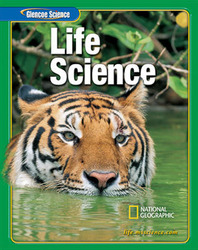1.
<a onClick="window.open('/olcweb/cgi/pluginpop.cgi?it=gif::::/sites/dl/free/0078617022/167379/421_508_q1_q2.gif','popWin', 'width=NaN,height=NaN,resizable,scrollbars');" href="#"><img valign="absmiddle" height="16" width="16" border="0" src="/olcweb/styles/shared/linkicons/image.gif"> (3.0K)</a>
A) 6 B) 8 C) 7 D) 9 2.
<a onClick="window.open('/olcweb/cgi/pluginpop.cgi?it=gif::::/sites/dl/free/0078617022/167379/421_508_q1_q2.gif','popWin', 'width=NaN,height=NaN,resizable,scrollbars');" href="#"><img valign="absmiddle" height="16" width="16" border="0" src="/olcweb/styles/shared/linkicons/image.gif"> (3.0K)</a>
A) 1996 B) 1998 C) 2000 D) 1999 3.
<a onClick="window.open('/olcweb/cgi/pluginpop.cgi?it=jpg::::/sites/dl/free/0078617022/167379/421_493_q3.jpg','popWin', 'width=NaN,height=NaN,resizable,scrollbars');" href="#"><img valign="absmiddle" height="16" width="16" border="0" src="/olcweb/styles/shared/linkicons/image.gif"> (27.0K)</a>
A) cardiac B) skeletal C) smooth D) tendon 4.
<a onClick="window.open('/olcweb/cgi/pluginpop.cgi?it=jpg::::/sites/dl/free/0078617022/167379/421_508_q4_q5.jpg','popWin', 'width=NaN,height=NaN,resizable,scrollbars');" href="#"><img valign="absmiddle" height="16" width="16" border="0" src="/olcweb/styles/shared/linkicons/image.gif"> (10.0K)</a>
A) gliding B) hinge C) ball-and-socket D) pivot 5.
<a onClick="window.open('/olcweb/cgi/pluginpop.cgi?it=jpg::::/sites/dl/free/0078617022/167379/421_508_q4_q5.jpg','popWin', 'width=NaN,height=NaN,resizable,scrollbars');" href="#"><img valign="absmiddle" height="16" width="16" border="0" src="/olcweb/styles/shared/linkicons/image.gif"> (10.0K)</a>
A) hinge B) ball-and-socket C) gliding D) pivot 6.
A) muscles that move food through the digestive system B) muscles in the face that allow you to smile C) muscles in your arms and hands D) muscles in your legs and feet 7.
A) oil glands B) sweat glands C) vitamin D D) melanin 8.
A) nourishment B) strength C) shock absorption D) vitamin D production 9.
A) attach muscles to bones B) hold bones together C) cover the surfaces of bones D) make red blood cells 10.
not found in the dermis?A) blood vessels B) hair follicles C) sweat pores D) oil glands














